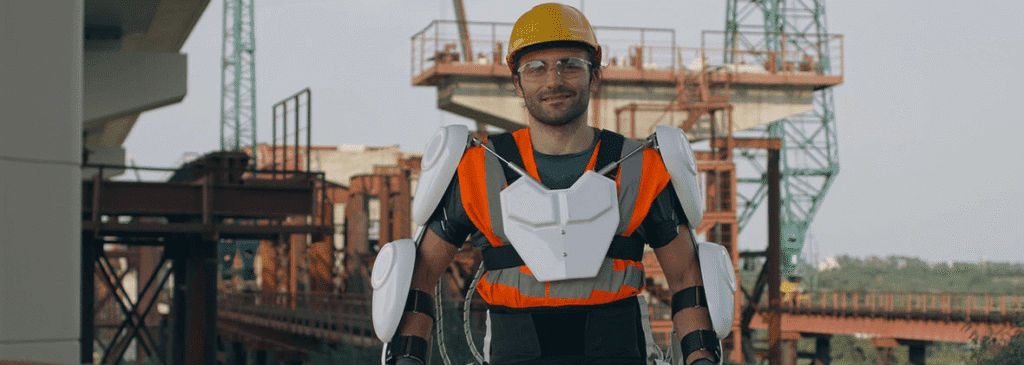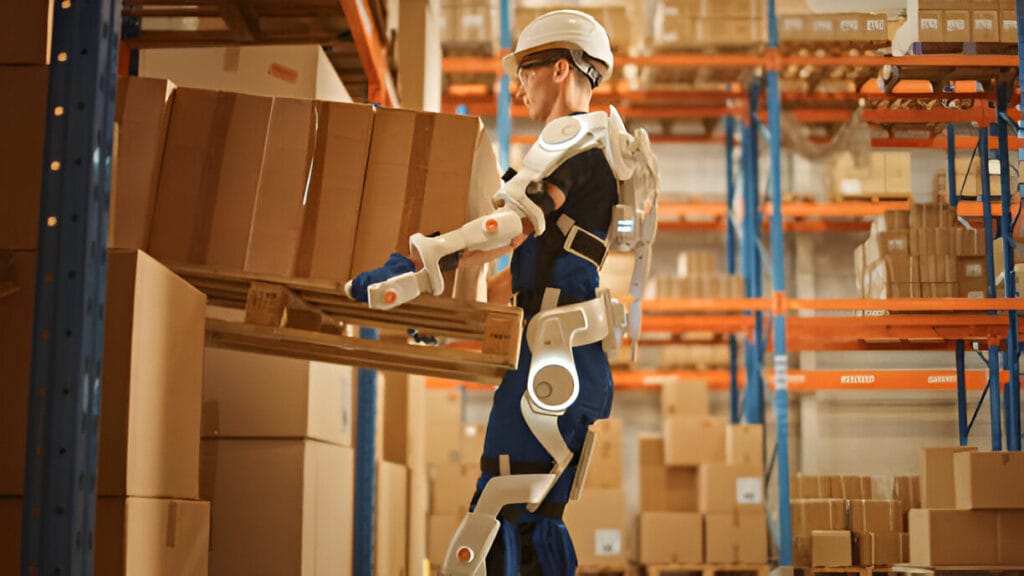Exoskeletons UAE healthcare construction is transforming the way people work and recover in the country’s medical and industrial sectors. These wearable robotic suits are designed to support, enhance, or restore human movement, making physically demanding tasks safer, more efficient, and less strenuous.
In the UAE, both healthcare institutions and construction companies are increasingly adopting exoskeleton technology to improve outcomes, reduce workplace injuries, and enhance productivity. From assisting medical staff in lifting patients to helping construction workers handle heavy loads, exoskeletons are becoming a key innovation in modern workplaces.
Understanding Exoskeletons UAE Healthcare Construction
An exoskeleton is a wearable device that augments the strength, endurance, or mobility of the user. These devices can be:

- Active exoskeletons: Powered by motors, hydraulics, or actuators, providing mechanical assistance for movement or lifting.
- Passive exoskeletons: Rely on springs or mechanical structures to redistribute weight and reduce strain without external power.
- Hybrid exoskeletons: Combine active and passive elements for optimized performance.
The technology integrates robotics, sensors, AI, and ergonomics to support human motion, reduce fatigue, and prevent injuries.
Key Applications in UAE Healthcare
1. Rehabilitation and Physical Therapy
Exoskeletons are used in hospitals and rehabilitation centers to assist patients recovering from injuries, strokes, or spinal cord conditions. Benefits include:

- Enhanced mobility: Helping patients regain walking ability or improve posture.
- Consistent therapy: Providing controlled, repeatable motion for rehabilitation exercises.
- Reduced caregiver strain: Supporting therapists in moving and assisting patients safely.
2. Assisted Patient Handling
Healthcare staff often face musculoskeletal injuries from lifting or transferring patients. Exoskeletons reduce the physical strain on nurses and caregivers by:
- Supporting back and shoulder muscles during lifting tasks.
- Minimizing risk of workplace injuries and long-term health issues.
- Improving workflow efficiency in hospitals.
3. Support for Elderly Care
Exoskeleton technology assists elderly individuals with mobility, allowing them to maintain independence while reducing the risk of falls and injuries.

Key Applications in UAE Construction
1. Enhancing Worker Strength and Endurance
Construction workers often perform heavy lifting and repetitive tasks, leading to fatigue and injury. Exoskeletons:
- Reduce physical strain on arms, legs, and back.
- Allow workers to handle heavier loads safely.
- Improve overall efficiency on construction sites.
2. Reducing Workplace Injuries
Work-related musculoskeletal injuries are a significant challenge in construction. Exoskeletons:
- Distribute weight evenly across the body.
- Provide mechanical assistance for repetitive movements.
- Lower injury rates, leading to reduced downtime and healthcare costs.
3. Supporting Safety Compliance
Exoskeletons help construction companies meet safety standards and labor regulations by reducing the risk of overexertion and injury.
Benefits of Exoskeleton Adoption in UAE
1. Improved Safety
By reducing the strain on muscles and joints, exoskeletons prevent injuries and support a safer working environment.
2. Increased Productivity
Workers can perform tasks more efficiently and for longer periods without fatigue, boosting operational output.
3. Cost Savings
Lower injury rates translate to fewer medical claims, less absenteeism, and reduced staff turnover.
4. Enhanced Rehabilitation Outcomes
In healthcare, exoskeletons accelerate patient recovery and improve mobility outcomes through precise, controlled assistance.
5. Promoting Innovation
Integrating exoskeletons positions UAE as a leader in advanced technology adoption, supporting economic diversification and smart workplace initiatives.
Leading UAE Institutions and Initiatives
1. Healthcare Facilities
Major hospitals in Dubai and Abu Dhabi are piloting exoskeleton-assisted rehabilitation programs, collaborating with technology providers to improve patient outcomes.
2. Construction Firms
Leading construction companies are exploring wearable exoskeletons to enhance safety and productivity on high-rise and infrastructure projects.
3. Government and Research Support
The UAE government encourages innovation through initiatives such as the UAE Robotics Strategy and partnerships with local universities for R&D in wearable technologies.
4. Private Sector Collaboration
Tech companies and startups in UAE provide tailored exoskeleton solutions for both healthcare and construction, combining robotics, AI, and ergonomics.

Challenges and Considerations
Despite the benefits, several challenges exist:
- High Initial Cost: Advanced exoskeletons require significant investment, though ROI is achieved through improved safety and efficiency.
- Training Requirements: Workers and medical staff must be trained to use the devices effectively.
- Maintenance: Regular upkeep and technical support are needed for long-term functionality.
- Ergonomic Fit: Devices must be customizable to accommodate diverse body types and tasks.
- Acceptance: Employees may need time to adapt to wearable robotics in daily work routines.
Future of Exoskeletons in UAE
The future of exoskeleton technology in UAE is promising, driven by healthcare innovation, smart construction initiatives, and a focus on worker safety. Emerging trends include:
- Integration with AI and IoT: Enabling adaptive assistance, monitoring, and predictive analytics.
- Lightweight Designs: Increasing comfort and mobility for prolonged use.
- Expanded Applications: From emergency response teams to logistics and aviation sectors.
- Local Manufacturing: Encouraging UAE-based production to reduce costs and support innovation.
As the UAE continues to invest in advanced technology, exoskeletons are expected to become a standard tool in healthcare and construction, improving human performance and safety.
Conclusion
Exoskeletons UAE healthcare construction is transforming workplaces and rehabilitation centers across the nation. By enhancing human strength, reducing injury risks, and improving productivity, exoskeleton technology addresses critical challenges in both sectors.
The UAE’s strategic adoption of exoskeletons not only supports worker safety and patient recovery but also positions the country as a leader in advanced robotics and wearable technology. With continued investment, research, and collaboration, exoskeletons will play a central role in shaping a safer, more efficient, and technologically advanced future in UAE industries.
Do follow UAE Stories on Instagram














